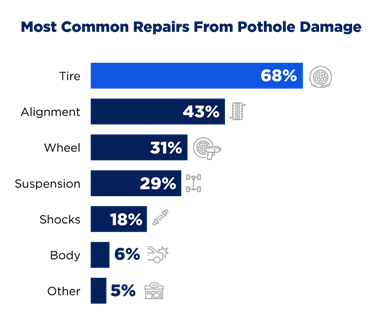BOISE – As snow and ice from recent winter storms begins to melt, a new challenge may appear on Idaho roads – ponding and potholes.
“In low-lying stretches of roadway, standing water can accumulate, increasing the risk of hydroplaning. And repeated cycles of freezing and thawing can allow potholes to form as roads crack and asphalt and other materials are displaced,” says AAA Idaho public affairs director Matthew Conde. “Even when temperatures warm, winter driving requires extra caution.”
According to previous AAA research, 44 million U.S. drivers paid for pothole-related repairs in 2022, at an average cost of $400 per incident.

AAA driving tips
- Avoid driving through standing water whenever possible. You may hydroplane, get stuck, or find a hidden pothole.
- Actively scan the road ahead for obstacles, including potholes.
- If you can’t avoid a pothole, safely reduce your speed as much as possible. Avoid hard braking.
- If you notice new or unusual noises or vibrations, have your vehicle inspected by a repair shop.
“If you start to hydroplane, you may notice a slight rise in the front of the car or a loss of steering. To reduce the chances of that happening, slow down, avoid hard braking and sharp turns, and drive in the tracks of the vehicle ahead of you,” Conde said. “At 30 MPH or less, properly inflated tires with good tread will likely maintain contact with the road. At 60 MPH, water may completely separate the tire from the road. If you know the area, try to avoid ‘trouble spots’ where hydroplaning may be more likely to occur.”

